Yeongil Bay Hot Springs (영일만온천)
14.0Km 2020-03-18
21, Unje-ro 386beon-gil, Nam-gu, Pohang-si, Gyeongsangbuk-do
+82-54-285-0101
The construction of this huge hot spring complex started in Yeongil Bay in 1988 after it was found that Yeongil Bay has the highest geothermal heat in Korea while drilling for oil in 1974.
The water’s main ingredients contain healthy minerals such as calcium, natrium, fluorine, magnesium, chlorine, sulfuric acid, fluorine, zinc, germanium and radium. Yeongil Bay Hot Springs maintains its water with alkali bicarbonate at a pH of 9.43. The temperature of the water is somewhat low though at 35℃.
The hot springs help to recover from fatigue, to help beauty care, anti-aging, neuralgia, heart disease, and liver functions. The water here also has a very unique texture.
GUTORAN (구토란펜션)
15.1Km 2024-08-01
17-25 , Gwigye-gil, Gyeongju-si, Gyeongsangbuk-do
+82-54-746-4847, +82-10-3520-9576
Gutoran is a hanok pension in Naenam-Myeon, Gyeongju, Gyeongsangbuk-do, owned by a ceramic artist who has hand-painted and decorated the house with his own roof tiles and pottery. In front of the house is a garden and lotus pond, also decorated with ceramic works. Nearby is the owners’ pottery workshop called (‘Gutoranyo’) where visitors can take part in ceramic classes.
The Oriental Medicine Resort: Chorakdang (한방테마파크 초락당)
16.6Km 2025-01-07
44-34, Gyemyeong-ro, Ulju-gun, Ulsan
+82-52-264-8001
Opened in 2001, Chorakdang is a health resort that specializes in Oriental medicine treatments. The resort offers the perfect setting for rest, relaxation, and medical treatments. The traditional hanok buildings and natural surroundings intensify the health benefits of the resort.
Gyeongju Yangdong Village [UNESCO World Heritage] (경주 양동마을 [유네스코 세계유산])
17.5Km 2025-03-24
134 Yangdongmaeul-gil, Gyeongju-si, Gyeongsangbuk-do
+82-54-762-2630
Gyeongju Yangdong Village is Korea’s largest traditional village, showcasing the traditional culture of the Joseon dynasty and the beautiful natural surroundings. Thanks to its many cultural heritages, including treasures, national treasures, and folklore materials, the entire village has been designated as a cultural heritage site. Many people have visited this village to see its wealth of cultural heritages and scenic surroundings, including King Charles III, who visited this village in 1993.
Seolchangsan Mountain and its four spines of mountains can be seen beyond the village. Approximately 160 old houses and 500-year-old thatched-roof cottages are nestled within the valley. Fifty-four of these homes are over 200 years old and have been excellently preserved in their original state, offering the opportunity to view a variety of unique traditional Korean houses in person.
Hyangdan (향단)
17.9Km 2025-03-24
121-83 Yangdongmaeul-gil, Gangdong-myeon, Gyeongju-si, Gyeongsangbuk-do
+82-10-6689-3575
Hyangdan in Yangdong Village, Gyeongju, Gyeongsangbuk-do, is a grand old house designated as a National Treasure. It is a 500-year-old hanok building that now operates as a lodging facility for guests who are looking for a good night's rest in a cozy traditional atmosphere.
Robo Life Museum (로보라이프 뮤지엄)
19.1Km 2021-03-10
39, Jigok-ro, Nam-gu, Pohang-si, Gyeongsangbuk-do
054-279-0427
The Robo Life Museum is a place where one can meet robots that are already part of our daily lives, knowingly and unknowingly. Visitors can learn about robots while dancing and drawing with them as well as touching and operating them. Through the museum, visitors can experience what the future will be like. It also is an ideal place for kids to satisfy their curiosity and have fun.
Najeong Beach (나정고운모래해변)
19.1Km 2021-08-02
1915, Donghaean-ro, Gyeongju-si, Gyeongsangbuk-do
+82-54-779-6325
Najeong Beach is situated on the shores of the East Sea. The beach offers many facilities as well as a seawater hot spring. The parking lot and pine tree forest by the hot spring are open to the public. Various water sports are also available in the area.
Pohang Steelworks (포항제철소)
19.3Km 2018-09-05
6261, Donghaean-ro, Nam-gu, Pohang-si, Gyeongsangbuk-do
Pohang Steelworks, also known as POSCO, was built at Yeongilman Bay from 1970 until 1981 to shift the focus of the country's growth engine from the agriculture-oriented primary industry of the 1960s to the heavy chemical industry. Photography within the factory is prohibited, making a visit here key to fully experiencing all POSCO has to offer.
PARK 1538 (POSCO Museum) (포스코역사박물관)
19.4Km 2024-10-24
14 Donghaean-ro 6213beon-gil, Nam-gu, Pohang-si, Gyeongsangbuk-do
The PARK 1538 POSCO Museum not only showcases the history, spirit, corporate culture and vision of POSCO, but also Pohang city's development, showing the city's transformation alongside the company. POSCO was able to achieve success thanks to the POSCO employees who fought against all kinds of adversities. The museum showcases such great achievements, as well as the entire history of the company, giving dreams and hopes to the youth who visit the museum.
Railway Forest & The Garden of Fire (철길숲 & 불의정원)
19.6Km 2024-12-10
A 4.3-kilometer stretch of railroad between Hyoja Station and the old Pohang Station that fell into disuse after nearly 100 years of operation due to the opening of the KTX Pohang Station in 2015. The railroad track runs through residential areas to create an urban forest, and water features like wall streams, musical fountains, and steel artworks began to attract tourists, creating a prime example of future-oriented urban regeneration and green ecological city plan. The Garden of Fire came about as a natural gas spring from 200-meter under sea level was ignited during the construction work for the Railway Forest. The flame was expected to be extinguished, but as the flame persisted, a garden was built around the flame to create a unique view.

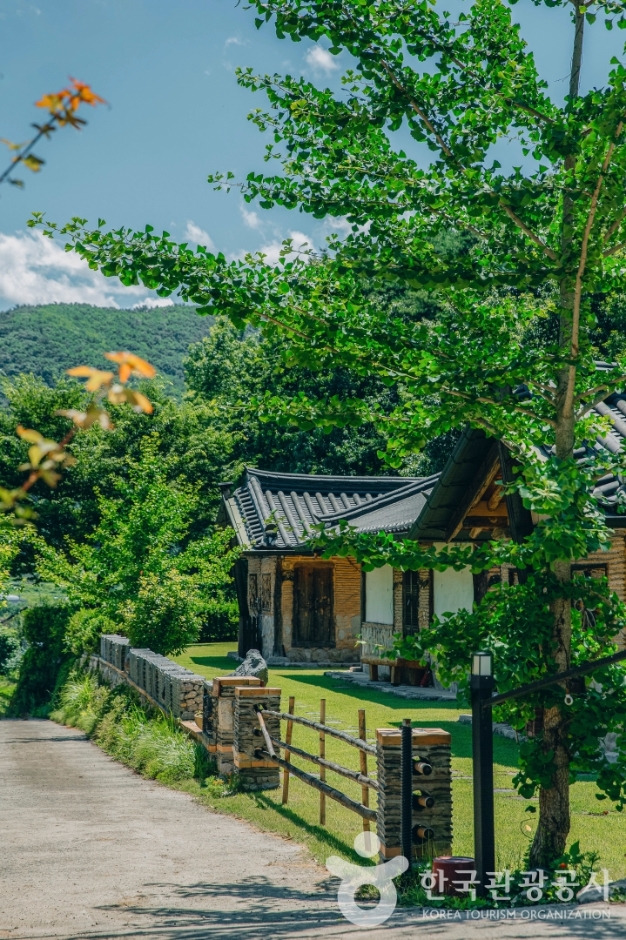
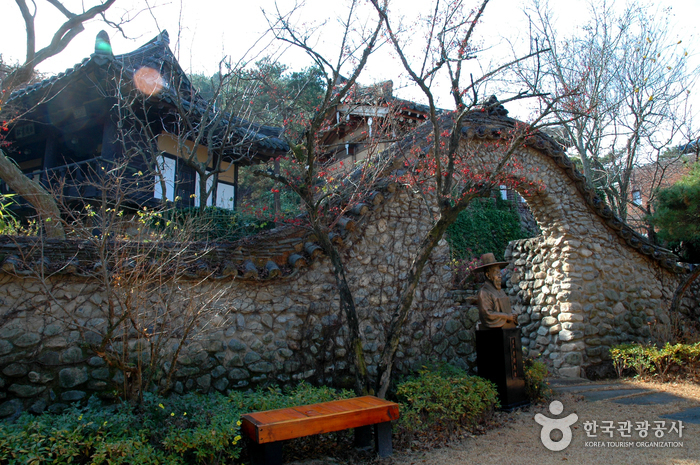
![Gyeongju Yangdong Village [UNESCO World Heritage] (경주 양동마을 [유네스코 세계유산])](http://tong.visitkorea.or.kr/cms/resource/44/2654744_image2_1.jpg)
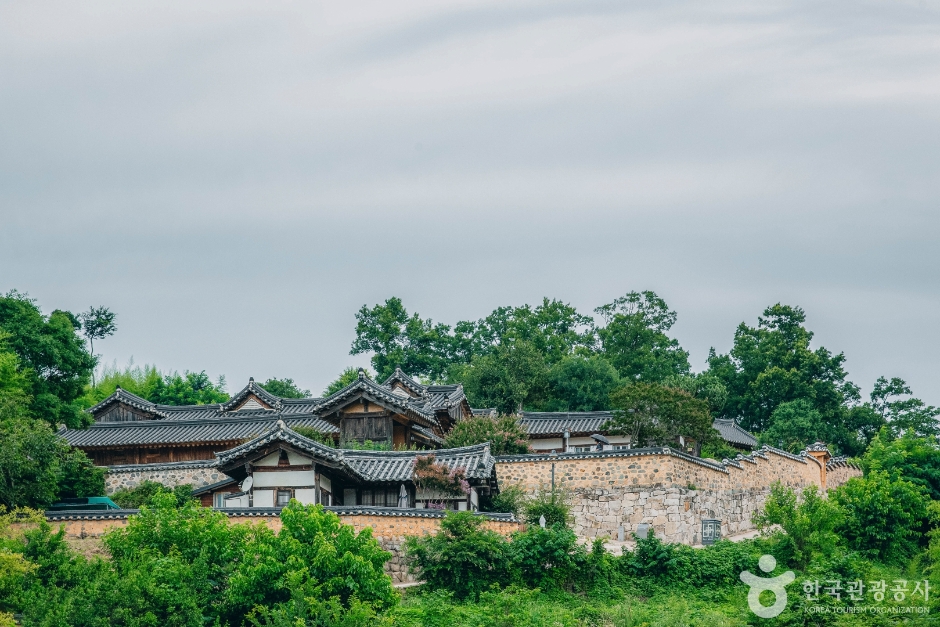
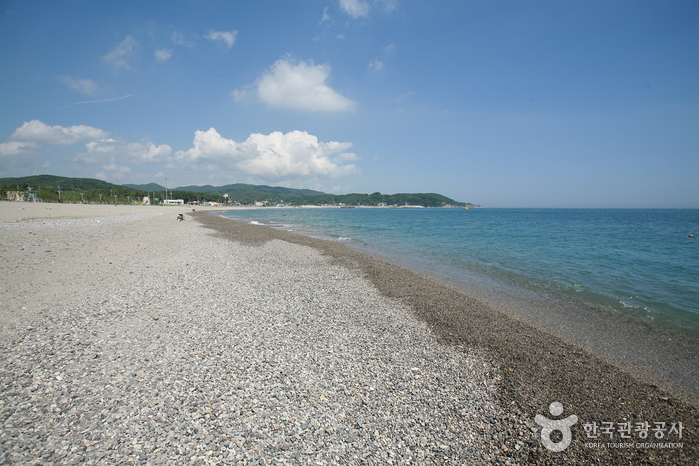
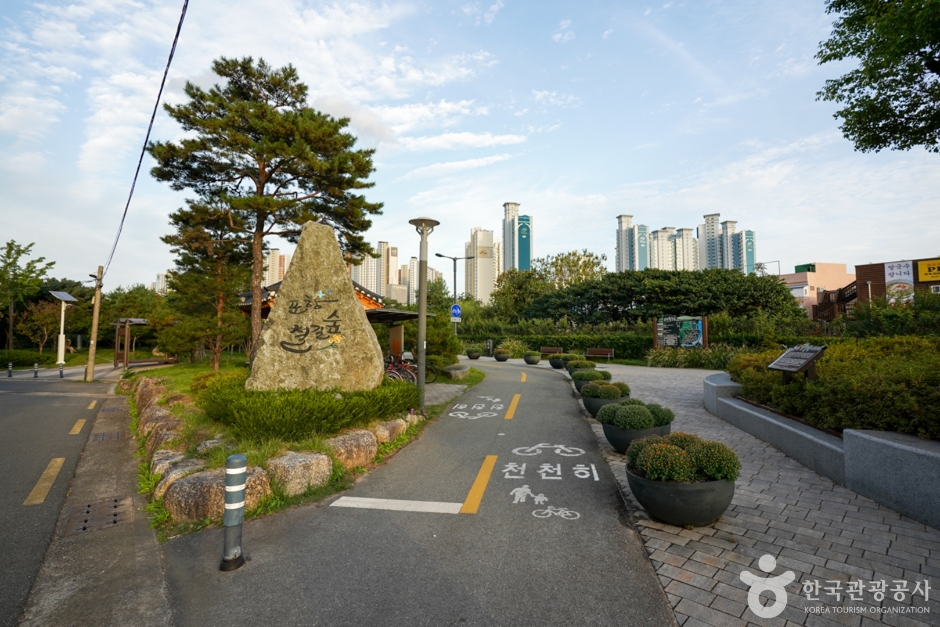
 English
English
 한국어
한국어 日本語
日本語 中文(简体)
中文(简体) Deutsch
Deutsch Français
Français Español
Español Русский
Русский